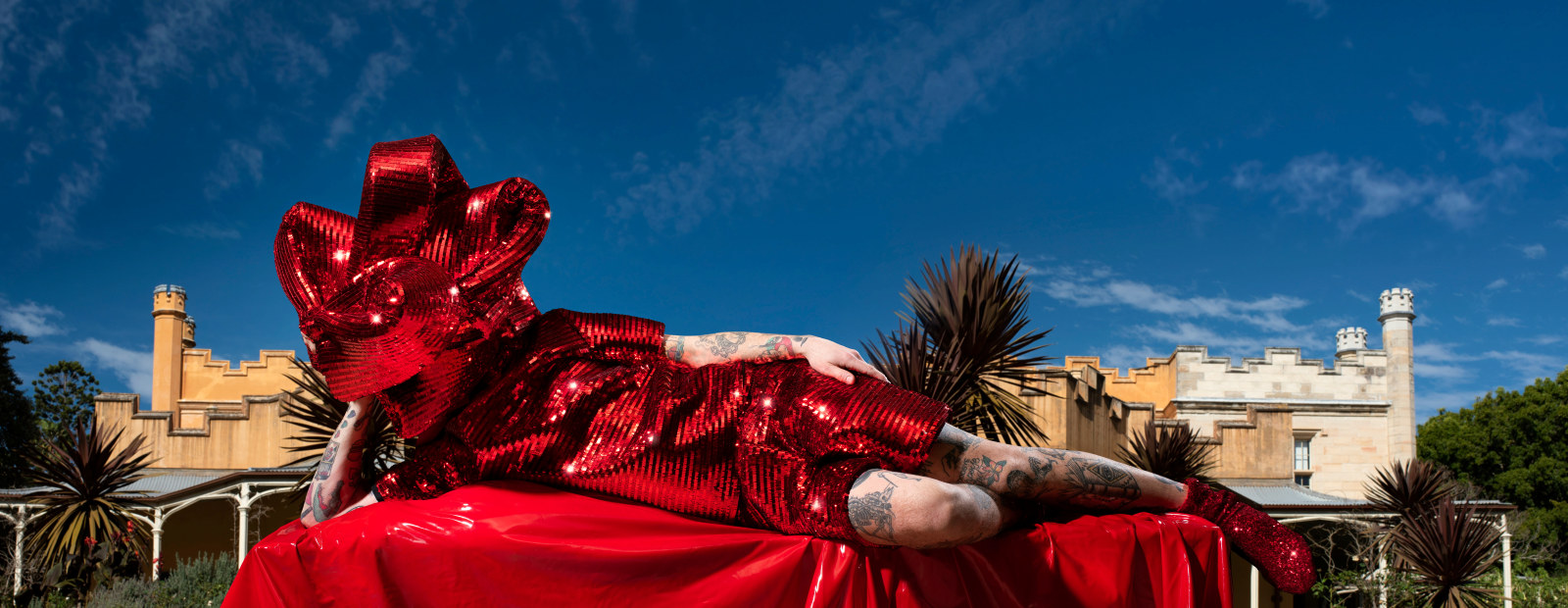Inspiring Iridescent: Justice & Police Museum
Find out more about the curatorial research that inspired artist Gerwyn Davies’s response to the Justice & Police Museum, featured in the Iridescent exhibition.
A figure shackled, or encased in a gold band of matrimony? Inspired by the story of Captain Moonlite and his love for fellow bushranger James Nesbitt, Justice & Police Museum by Gerwyn Davies plays on the dual meaning of the ring – as a symbol of love, or of incarceration.
Andrew George Scott, a.k.a. Captain Moonlite, was arrested for fraud after trying to cash a bad cheque in 1870. Following his arrest, he was kept in a cell at the Water Police Court, now the Justice & Police Museum. In Davies’s image, the bound figure sits in the processing room awaiting sentence. He turns his back on the portrait of the monarch that hangs on the wall as a reminder of colonial authority. Captain Moonlite’s official records of incarceration and punishment survive in NSW State Archives, yet it is Scott’s words of love for Nesbitt – written from Darlinghurst Gaol in 1880 – that speak most loudly to us today. Under the reign of Queen Victoria their love was an unspeakable act. This figure reminds us that it was an act, also, of defiance.
Related

Fabricating heroes: Iridescent by Gerwyn Davies
Gerwyn Davies’s creations – from oversized queer creatures to fantastically costumed beings – invade our historic interiors and significant places
Published on

